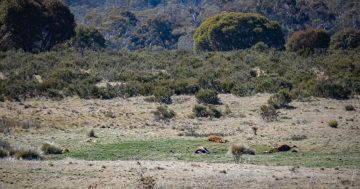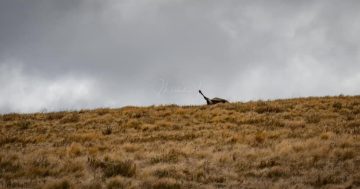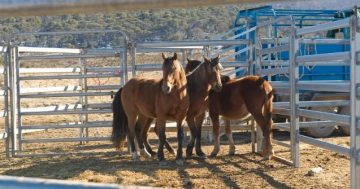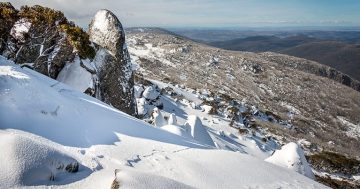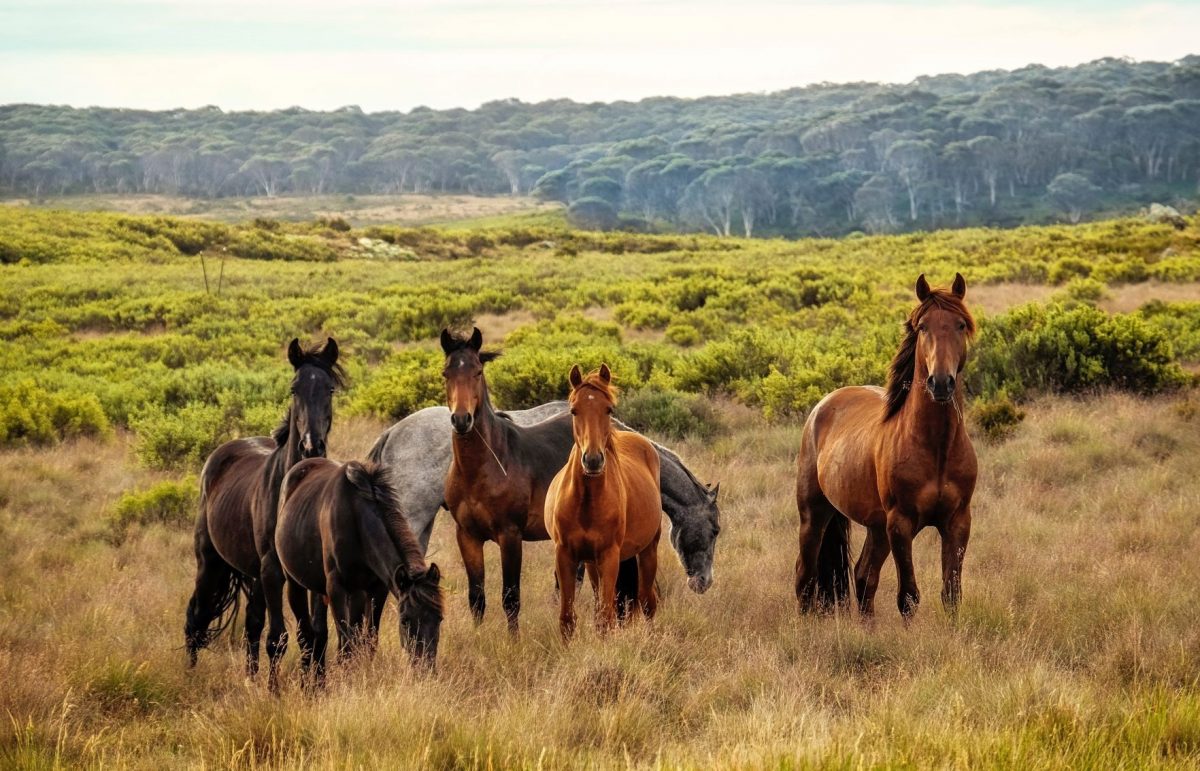
Applications for the NSW Government’s new Wild Horse Community Advisory Panel for Kosciuszko National Park close this week. Photo: Christine Mendoza.
Community members with scientific expertise are encouraged to apply for positions on a new community panel advising on wild horse management at Kosciuszko National Park.
With the 29 July deadline now days away, the panel will be the only entity with oversight over the state government’s new Kosciuszko National Park Wild Horse Heritage Management Plan, which was finalised in November 2021.
The NSW National Parks and Wildlife Service (NPWS) is looking for six to eight panel members to advise on matters relating to the identification of the heritage value and management of sustainable wild horse populations within the Park.
Under the new management plan the wild horse population in Kosciuszko National Park would be reduced from 14,380 to 3000 by 2027 through passive trapping, rehoming and ground shooting.
The wild horses would also be restricted to 32 per cent of the park.
In accordance with the Kosciuszko Wild Horse Heritage Act 2018, the new advisory panel must include at least one Aboriginal person, one representative of the community from the locality around Kosciuszko National Park and other persons who have expertise and experience in one or more of the following: recreational planning and management (including horse riding); horse or other animal welfare management; alpine tourism planning and management, or; community involvement in conservation.
According to the National Parks and Wildlife Service the previous scientific advisory panel, appointed by former NSW environment minister Matt Kean, had fulfilled its functions in providing expert advice and would not be reconstituted.
NPWS said they would continue to apply the best available scientific advice from a range of sources when managing Kosciuszko National Park.
The community panel will be appointed after an assessment process in the coming months.
The NPWS has also confirmed The Kosciuszko National Park Wild Horse Heritage Management Plan 2021 is currently being implemented and they were unable to provide operational details.
The most recent public update detailed the 2020/21 control program, which focused on reducing wild horse negative impacts in three key areas affected by the 2019/20 black summer bushfires.
Using passive trapping, horses are attracted to trap sites with food lures.
Panels are slowly erected around the lures, allowing the horses to become accustomed to them.
Between 23 July 2020 and 1 October 2021, 787 horses were removed from Kiandra, Cooleman, Nungar Plains and surrounds over the 91 trapping days during the control program.
The NPWS has confirmed 768 horses were rehomed and 14 horses were sent to the knackery.
Five horses died as a result of trapping with one mare and three colts dying in separate incidents while being held in the trap yards due to suspected head or neck injuries.
Another mare died in the NPWS temporary holding yards due to a suspected head injury.
According to the NPWS horse deaths in trap yards have been a very rare occurrence in the history of the trapping and removal program.
A total of 320 horses that didn’t meet the then NPWS control program criteria for removal, including heavily pregnant mares and mares with young foals, were released.
Region Media requested updated data covering the trapping period from October 2021 to June 2022 but did not receive it before publication.
Criteria and application forms for positions on the community advisory panel can be found here.







